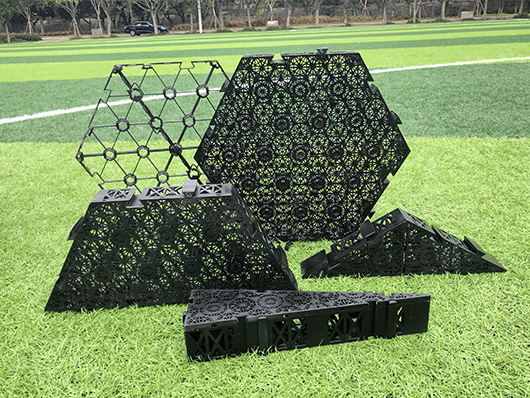Cities are one of the greatest products of human civilization. They are the masters of human science and technology. And the influence of nature on humans has been reduced in cities. Of course, the rapid development of cities has also brought a series of problems, such as the urban heat island effect.
An urban heat island is any city with a higher temperature than the surrounding area. (The meaning of the word “island” is not literal, but an analogy to isolated hotter temperatures.) Most cities experience the urban heat island effect to some degree. However, the effect in areas that are densely populated tends to be stronger (such as New York、Tokyo、London、Hong Kong and other international cities).
According to the U.S. Environmental Protection Agency, urban centers have higher daytime temperatures and higher nighttime temperatures than less developed areas. According to a 2017 study in the journal Geophysical Research Letters, cities are expected to experience twice as much heat stress as surrounding rural areas by the middle of the 21st century. What’s more, the urban heat island effect will only increase in the coming decades.

What causes the heat island effect?
Shade from trees and other vegetation, and evaporation of moisture from the soil and leaves act as nature’s “air conditioners.” Heat islands form when natural landscapes are replaced by materials used in road construction, such as asphalt, concrete and stone. These man-made materials absorb, store and re-release the sun’s heat better than natural landscapes. As a result, surface and overall air temperatures are higher. The hustle and bustle of city life (traffic, factories, dense crowds, etc.) also generates waste heat, which further exacerbates the heat island effect.
While the heat island effect is generally thought of as a summer phenomenon, it can be felt in any season (including winter) and at any time of day. That said, it’s most noticeable after sunset, when sidewalks and other urban surfaces release heat stored earlier in the day. This effect is also strong in the presence of clear skies and calm winds, as these conditions respectively maximize the amount of solar energy reaching the urban surface and minimize the amount of heat carried away.
The impact of the urban heat island effect
City dwellers may think of high temperatures as an unavoidable part of city life (along with noise, light pollution and the rodent that occasionally appears in the city), but the heat island effect should not be overlooked. As the Earth’s climate warms, cities are increasingly vulnerable to the negative effects of urban heat.
There is an increase in the risk of heat stroke. By increasing temperatures during the day and preventing the atmosphere from cooling at night, urban heat increases the risk of heat-related illnesses such as dehydration, heat stroke, and even death. Heat has been the leading cause of weather-related deaths in many regions over the most recent 10- and 30- year periods.
Energy consumption increases. Energy demands are also higher in heat island cities, as residents rely more on air conditioners and fans to keep them cool during the summer months. Of course, that means higher utility bills.
There is heavy air pollution. With the construction of power plants and the use of fossil fuels, as well as the growing demand for electricity in the summer months, more greenhouse gases are released into the atmosphere. City heat also contributes directly to air pollution by mixing with vehicle exhaust to form ozone.
How can urban communities cool down?
Most efforts to cool urban communities rely on reintroducing vegetation into urban environments to mimic nature’s own natural cooling, shading and reflective techniques. Some cities, for example, are building more parks, green spaces, golf courses, tree-lined streets and urban farms for their urban development.
Communities are also increasingly adopting “green” or ecological buildings and incorporating features such as green roofs into building designs to reduce indoor and outdoor temperatures.
Some cities are also reducing the impact of heat islands by increasing the reflectivity of existing urban surfaces. For example, New York, the largest city in the United States, added white roof requirements to its building code as early as 2008. (White surfaces such as fresh snow reflect up to 90 percent of sunlight, while dark surfaces such as asphalt reflect about 5 percent of sunlight.) Similarly, Los Angeles, the second-largest city in the United States, has introduced various “cool pavement” pilot programs. The city painted the traditional asphalt pavement in light gray and white during the project’s implementation.
A great way to reduce “Heat Island Effect”
HOENSOEY Technology advocates “let the urban surface breathe freely” and proposes the technical solution for “shallow water treatment system”, which is a creative method to restore the constantly damaged environment to its natural form. In addition, it is also a sustainable development method, which has opened up a new way for the harmonious development of buildings. It conforms to the concept of environmental protection and helps achieve the targets of peak emissions and carbon neutrality.

Principle:
Collect the rainwater from the roof, road surface, sports infrastructure and parking lot to the HOENSOEY Cells;
Use HOENSOEY Cells to concentrate the rainwater inside while playing a stable support role during stormwater treatment (retention, attenuation or infiltration) to form a modern, innovative and environmentally-friendly shallow groundwater treatment application system;
Reduce the impact of the “heat island” effect on people, while creating ecological landscapes to beautify the urban environment, and allowing the surface to breathe freely:
- Surface base — rapid drainage, regulation and storage, and infiltration in the shallow layer of the surface;
- Power-free irrigation — self-circulation irrigation system for green area;
- Tree protection — protects the root system and prevents the pavement from being damaged by tree roots.
